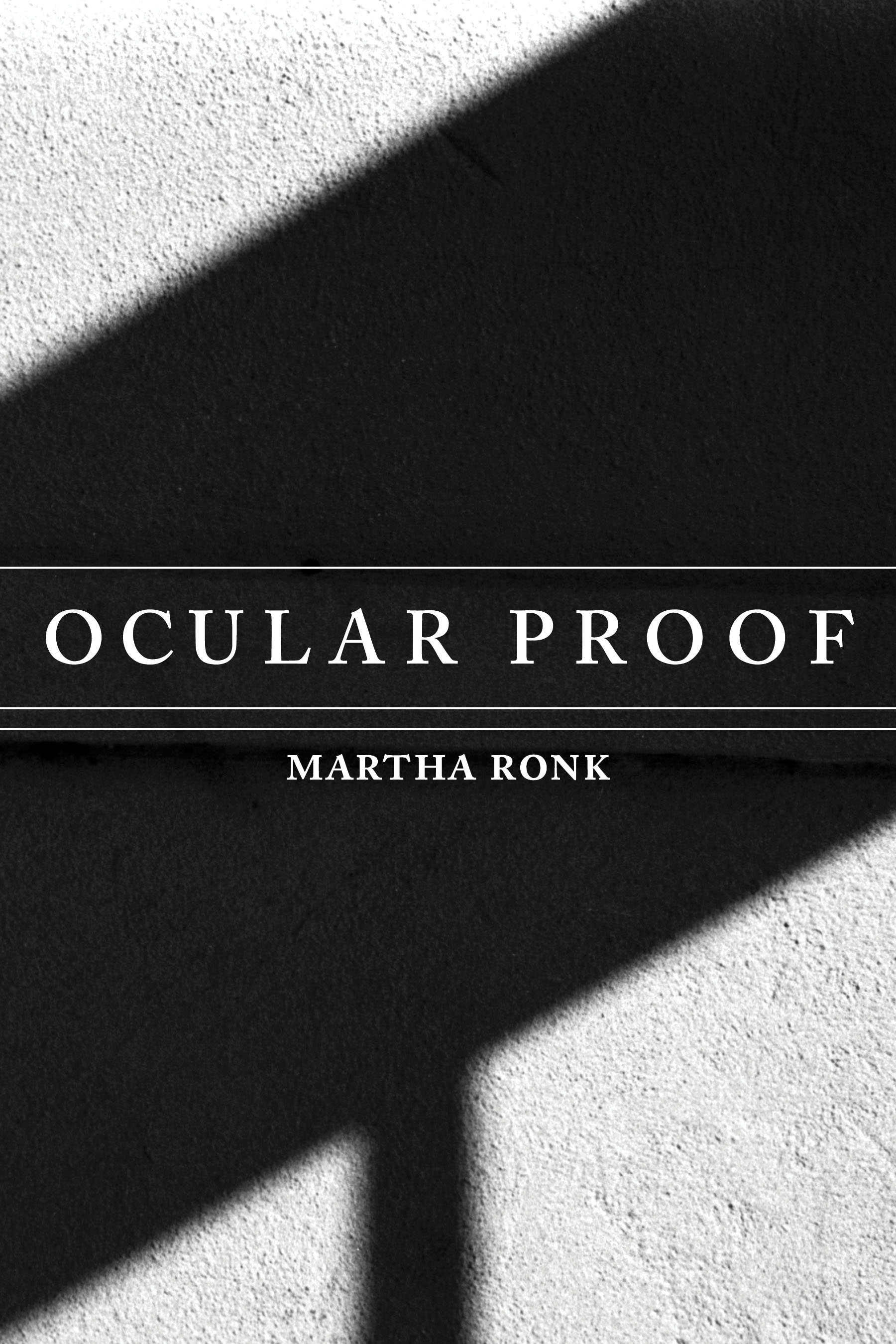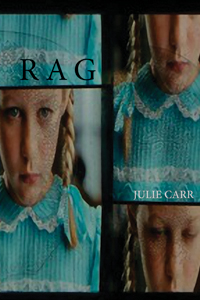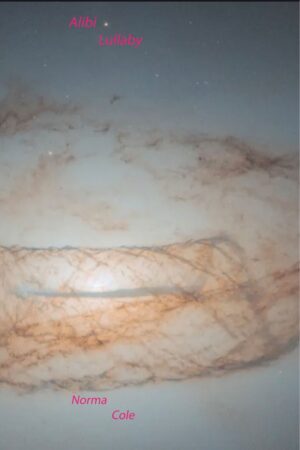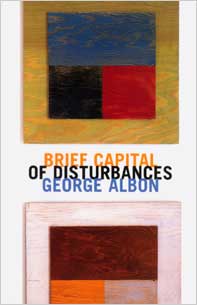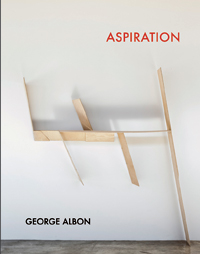Description
Taking its title from Shakespeare’s Othello, a play that questions the veracity of what eyes actually see, Ocular Proof explores not only what each of us sees, but also how photographs modify sight as they capture, distort, frame, and simultaneously encourage discovery. The poems move through black and white photographs, shadows, distortions, and memories, restless for some sort of clarity, yet also merging with the ghostly and reading into the out-of-focus. These poems play off critical insights about the function of photographs and the power of visual imagery in the modern world and yet are decidedly personal. They address the unreality of one’s own life, the illegibility of the past and future, and our strong attraction to focused details such as “Kertesz photographing stairs extending past the small figure and out of sight.”
Though photography, like poetry, may always perform an absence, Ronk has managed, in this vivid, evocative collection of reflections on the medium, to create charged presences—sunflowers in the dark, sleepwalking rooms, shadows anchored in place—it’s not they who are present, it’s the poetry that is, and to such an intensity that they are all still alive within it—and we find ourselves alive in it, too. Throughout, Ronk juggles a panoply of philosophical considerations so delicately that we don’t realize that we’re balancing on a pin.
Cole Swensen, author of Noise That Stays Noise
Ronk has long made a practice of stretching and tensing the scholar’s analytical tone until it snaps with the near-explosive force of the poetic. In these new lyric poems, which take as their subject and muse monumental works of black and white photography, Ronk probes pictures for clues to a seemingly simple question–What do we see?–that turns out to be a riddle: “What for god’s sake/ is that roundish bit on top of a shrub over there?” is but one of many questions raised. Visions are “blurred by air,” in these poems, whose other watchwords include “shadow,” “grainy,” “darkness,” and “obscured.” Here, “Knowing is out of the question,” and yet, as haunted as these poems are by the “photo of the not-yet, the wait-a-moment,/ the what-else-might-there-have been,” they are proofs, too, of art’s relentless pursuit of images that can never quite come into focus, yet are undeniably real. In these poems, Ronk thinks with her heart, feels with her mind, speaks with her eyes.
Craig Morgan Teicher, author of TO KEEP LOVE BLURRY
Martha Ronk’s filmic, photographiliac Ocular Proof wanders visionary fields—fogged horizons, mercury water, stars going suddenly out—to reframe the field of vision. The book’s three interlaced meditations explore how memory and art double and thereby divide the world, “getting it by not getting it.” Through her carefully focused, tilt-shift lens of looking hard, listening close, reading aright and aslant, Ronk is agile and wildly imaginative confronting Milton’s abysses and Mozart’s crescendos, the nocturnes of Baudelaire and Brassaï, the vacant skies of Robert Adams and Sugimoto’s mesmeric seas, fervent to find a syntax for tracing an oasis of the real.
Andrew Zawacki, author of Videotape
About the Author
Reviews
Excerpt
Martha Ronk is the author of 11 books of poetry and one book of short stories, Glass Grapes. Her most recent poetry books include Transfer of Qualities, Omnidawn 2013, long- listed for the National Book Award and Vertigo, Coffeehouse Press, 2007, winner of the National Poetry Series. She has had several artist residences at Djerassi and MacDowell, won a National Endowment Grant, and the Lynda Hull Poetry Award. Her PhD is in Renaissance literature and she has been a faculty member at Occidental College in Los Angeles and during the fall 2015 at Otis College of Art and Design.
A brief interview with Martha Ronk
conducted by Rusty Morrison
I can’t express my gratitude to you for bringing this next book to Omnidawn for publication. This is the third time we are working together, and I have come to appreciate deeply the care you bring to the process of bringing a book from manuscript to publication. And it remains a great pleasure that your two previous books with us—IN A LANDSCAPE OF HAVING TO REPEAT and TRANSFER OF QUALITIES—were highly lauded, which is always a great boon to the publisher. I’ve always been a fan of your poetry, but over the recent years, I’ve been especially attentive to the ways that each poem, through your adept use of language, draws me into its unique, multidimensional vista of meaning. I find myself in a landscape which I enter with such physical intensity that I always feel a sense of vertigo as the poem ends—it is an experience, I realized as I began to read this new book for the first time, that I often have when I stare long at a powerful photograph. So it seems fitting that OCULAR PROOF takes as a foregrounding subject all that photographs can do for, and to, us. I’d like to ask how this work initiated for you? How and when and why you decided to give yourself over to writing poems reflecting upon the fascinating ways that photography works upon our psyches. And, if you feel it’s useful, could you answer how you see this work in relation to your past work?
I have been thinking about and drawn to photography since graduate school when my then husband decided to give up his PhD work and become a photographer and eventually a critic and editor. After moving to LA, we had a darkroom in our one bathroom, I bought a Leica f3 and joined a women’s photography group with others from Cal Arts. Both of us spent hours walking the streets new to us, looking at and discussing photographs—during the 70’s photography just took off in Los Angeles. Like many other children, I also had a Brownie box camera as a child and filled albums with photos of family, dogs, Lake Erie. Teaching literature at Occidental College, I became especially interested in the relationship between words and images, in the relationship between dialogue and spectacle in Shakespeare’s plays, and in the critical work of W.T. J. Mitchell, Picture Theory for example. I wrote a scholarly article on the ways in which visual landscapes that couldn’t be represented on stage were represented for the mind’s eye in the language of As You Like It. Many of my books of poetry have poems on seeing and photographs, especially Vertigo that ends with a series of poems with long titles, “Also the photographs were out of focus, perhaps one had to conclude” or “The dead speak in pictures, some 19th-century figures keeps saying.” They became further representations of vertigo, dizziness, confusions of memory—most obviously influenced by W.G. Sebald. In Transfer of Qualities, an Omnidawn book, I was especially focused on photograms because of the intimate relationship of person and thing. Perhaps my experience is mostly imaginative, but I experience a physical shift when looking at photograms (other photographs as well), as if some aspect of myself moves out at the same time that the image of an actual leaf or whatever object is on photographic paper moves towards me. Or perhaps deep concentration is what manages to embody the subject. My obsession with memory manifests in all my books and again in Ocular Proof, memory and its pitfalls and losses, its analogy to difficulties of knowing, its theoretical issues. What to make of inadvertent lapses, of glitches, of lack of traction. The tension between the document and the unreality of photographs is somehow reassuring to me as it parallels my sense of the unreality of even the most daily of events.
I’d like to ask you to speak to your choice of form for the poems in this book. Long lines engage us in their sinewy development, but there are often short lines to abruptly shift or emphasize aspects of our relationship to the sentences spooling out before our eyes. You are a master at selecting words for lines to end upon. And you are quite willing to use the page in subtly surprising ways: for instance, a phrase might break from its extended sentence and begin on a new line mid page. There is great freedom and risk in the deft precarity and deft poise with which you bring forth a poem. Can you speak to your formal choices, and how you vary the form for some of the work in this book. I’m fascinated by how your formal choices enhance a reader’s deep intuitive engagement with the content of this work.
This seems the most difficult of questions and I am not sure I can answer it well. Let me start with something simple. I am interested in end words because one hears them strongly. I did not attend an MFA program, but learned whatever I learned from Shakespeare, Donne, Wyatt, Milton and others. So I note that for example in one poem, lines end in “moment,” “morning,” “momentary” and other “ing” words. Or in another, “white,” “plant” “front” utilizing the “t” sound. Or several lines in another ending in “not” or another in “glass,” “past,” “abstract.” I want to attend to sound throughout so I read poems aloud and in some ways find the movements and relationship of lines akin to a sense of physical movement. Young, I wanted to be a dancer, was also a very good runner and loved gymnastics, yoga, kung fu, as hard as it is to believe as my body rebels. The poems about shadows are looser and allow for more space than the earlier poems in Ocular Proof that focus on rectangular photographic prints, so my choices are related to visualization. I wanted to learn about end words from Creeley who was a master at it and who simultaneously created a wondrous sense of physical stutter or reticence.
Some of the poems in this text close with a quote, which will rest a little lower on the page. These come from writers, artists, photographers whose work echoes relationally with the poem above it. Some provide anchor and ground, provide a chthonic resonance that the space on the page allows to fully reverberate meanings, bone deep. I’m fascinated by the placement on the page, and the associations that the quotes encourage. Can you speak to any of the poems that have such quotes? Would you speak to any aspect of your process of making this formal choice? Perhaps there is one poem that was a particular challenge to bring to the page? Or perhaps one changed (or changed you) in ways you hadn’t expected as you brought it to fruition?
… Since we are discussing quotations, this leads me to want to ask about some of their sources. Could you comment on any writer, photographer, or even musician, or any workers in any field of creative endeavor, with whom you have felt and still feel most kinship? Whose works have stayed most relevant to you as a poet and thinker?—whether directly relevant to this text, or not. Please feel free answer whatever aspect of this question that your intuitions bring to mind.
I am unable to write in isolation although LA promotes it, and surround myself with other writers and critics and poets to instigate a conversation of sorts that gives me a matrix to work in, language other than my own, and ideas that stimulate or vex. A way to get out of myself while also remaining. I read a number of books about photographs and looked at books I owned and admired. I was especially moved by a show in Los Angeles by Robert Adams who is the great photographer of the current southwest. The complexity of his compositions is inspirational and like other great images raises questions: what am I looking at; what does it mean to look carefully at something, what shifts occur because of thinking about looking (I also read T.J. Clark’s book on looking at Poussin, The Sight of Death.) Sometimes the quotations speak directly to the poem on the same page, but more often I hope they suggest aspects of seeing I am thinking about. Roland Barthes’s book, Camera Lucida is the one I lingered on: the photograph is the advent of myself as another. This book also is the one that addresses the way in which photographs are always images of that which is lost or gone:
The Photograph then becomes a bizarre medium, a new form of hallucination: false
on the level of perception, true on the level of time: a temporal hallucination, so to speak, a modest, shared hallucination (on the one hand “it is not there,” on the other “but it has indeed been”): a mad image, chafed by reality.
The photograph is also, according to Barthes, the return of the dead. I wanted the quotations from others who had addressed photography to float at the bottom of pages, sometimes in relation to the poem on the page, and sometimes more as counterpoint, as another voice in prose.
One aspect of writing this manuscript that was difficult was working with the seer in the poems, with ways of suggesting the one looking without focusing on the “personal.” In The Privileged Eye, Max Kosloff has argued that the photograph can best be understood as a form of “witness,” with all the possibilities of misunderstanding, partial information or false testament that the term may be taken to imply. It was also difficult to write the final longer poem about shadows. Fox Talbot called photography “light writing.” I wanted to write about writing as if I were in and out of light and shade and I had to edit a much longer piece, cut and rearrange, doubt and continue. The poem is outside my usual range, but I knew I wanted something like it. It took a long time, but so did the book—working out how to think in the realm chosen. I am drawn to the quotation, again by Barthes: Ultimately, Photography is subversive not when it frightens, repels, or even stigmatizes, but when it is pensive, when it thinks.
Would you tell me a bit about yourself? Anything you are willing to share that might not be in your short bio that is published in the book? Anything that might have interesting, tangential relation to the book?, or anything that doesn’t!
I wish I could get myself to return to making photographs. I keep saying I will and then I don’t. Why isn’t there more time in the day? I wish I could just choose what I write about (the current and distressing culture) instead of its imposing itself. Lately I have very much enjoyed writing reviews, first for the LA Review of Books and now for Constant Critic which has introduced me more deeply to some terrific new books. I love looking at California Craftsman furniture, tiles and pottery and am trying to replicate the matt green on my own thrown pots. I wish the junk stores that used to line Colorado Blvd. in Pasadena where I spent many hours in the dusty aisles hadn’t succumbed to Gap etc. Junk stores are evocative and places in which to lose oneself.
You found the photograph we’ve used in the cover design for this text. I wonder if you’d speak to that process. And/or how the cover reflects your intentions, desires for the book?
I had chosen a image I loved, a photo by Robert Adams, some years ago, but it just didn’t make for a good cover, although a gorgeous and for me terribly moving photograph. I emailed Judy Fiskin, a well-known photographer living in LA and one of the members of the Proust group (we meet and read Proust aloud) and she suggested an image by one of her students at Cal Arts and I knew it was right and Cassie created a striking graphic cover that is both readable and unreadable, and there we are. All of my published work has a photograph on the cover. I guess that speaks to the obsession that helped create Ocular Proof.
Commenting upon and extrapolating from the history of photography, the writings of thinkers such as Walter Benjamin and Roland Barthes, and more personal pictures, Ronk’s ekphrastic pieces on black-and-white photographs wring insight from the smallest compositional details. In “The Photographic Object” she writes, “it’s either dense shadow or a tree, either downhill or a camera tilt,/ ironic/ or a story hidden in what’s seen.” Ronk’s concentration is particularly acute when it comes to problems of representation, and photography’s’s lingering reality effect: a photograph “counts for more than it is” because “We cling to it.// Even photoshopped or cropped.” Her sonorous lines, long sentences, and agile syntax slow down and speed up the tempo of these poems, dilating the camera’s single slice of time, and gesturing toward the claustrophobia of its eternal present.
a blurry photograph
The tree azalea overwhelms evening with its scent,
defining everything and the endless fields.
Walking away, suddenly, it slices off and is gone.
The visible object blurs open in front of you,
the outline of a branch folds back into itself, then clarifies—just as you
turn away—
and the glass hardens into glass
as you go about taking care of things abstractedly
one thing shelved after another, as if they were already in the past,
needing nothing from you until, smashing itself on the tile floor,
the present cracks open the aftermath of itself.

